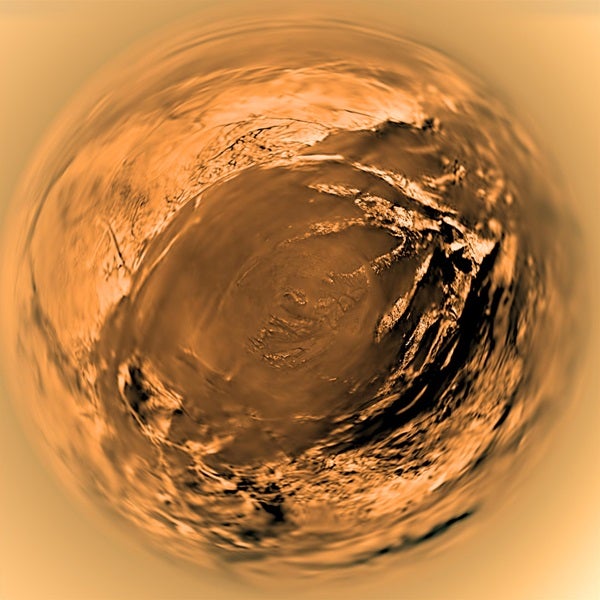That began to change in 2004. NASA’s still-functioning Cassini spacecraft started the revolution when it arrived at Saturn on June 30. The cameras on this orbiter are equipped with filters that can penetrate the haze-choked atmosphere and capture low-resolution images of the surface. Sharper views come through the craft’s radar mapper, which reveals objects as small as about 1,150 feet (350 meters) across. But the best views of Titan’s surface came from the European Space Agency’s Huygens probe. Cassini carried Huygens during its trek to Saturn and then released the smaller probe the night of December 24/25. Huygens embarked on an uneventful three-week journey to Titan, which culminated January 14, 2005, when it descended by parachute through the moon’s atmosphere and landed on the surface.
Scientists created a movie from data collected by Huygens’ Descent Imager/Spectral Radiometer during the 147-minute plunge to the surface. At first the camera saw only haze, but once the atmosphere started to clear at an altitude of about 37 miles (60 kilometers), objects as small as 330 feet (100m) across came into view. As the parachute carried Huygens lower, river channels appeared, and they seemed to flow into a large lake. The movie wraps up with Huygens in a soft sandy riverbed on the surface, where the camera captured details as small as grains of sand.










